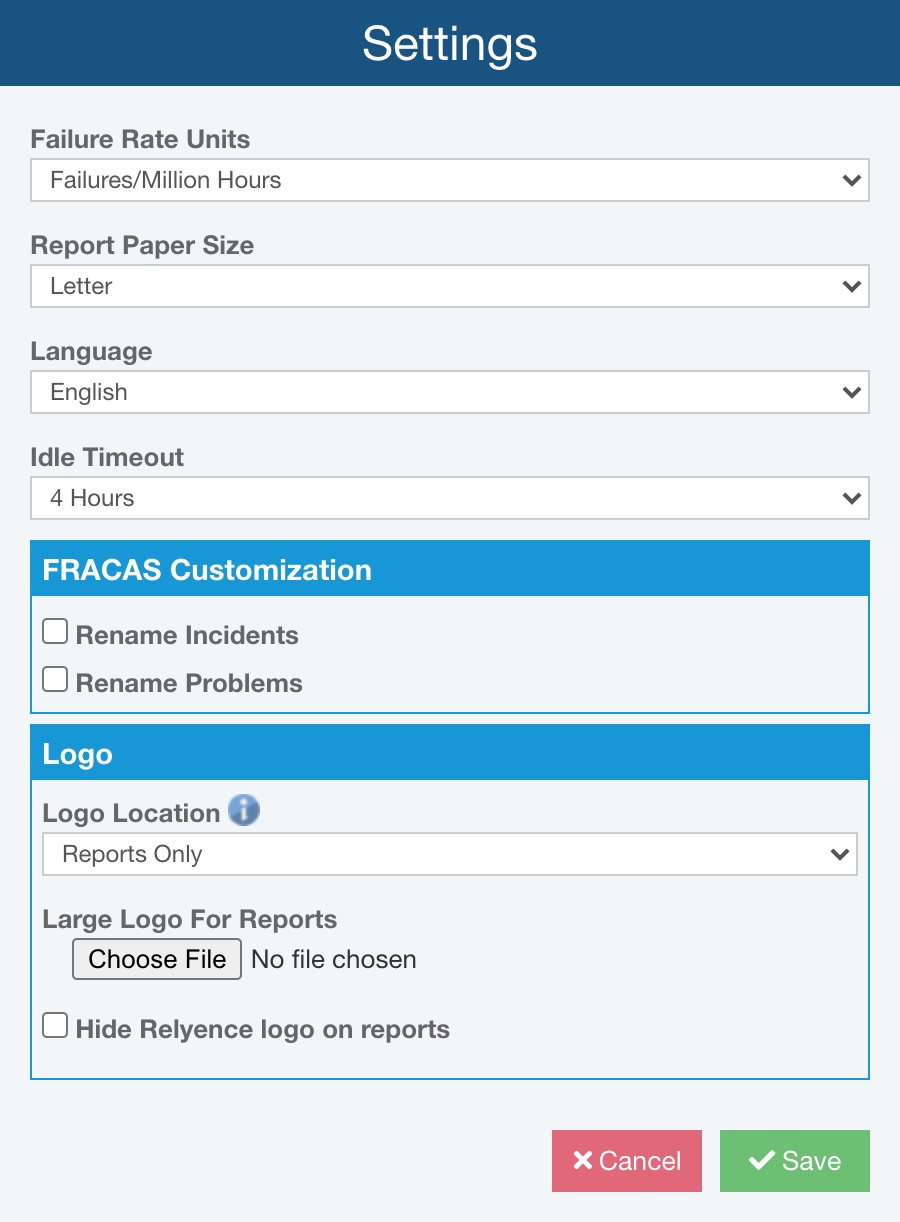Changing the Failure Rate Multiplier
The Failure Rate Multiplier defines the units for failure rate values. By default, Relyence Reliability Prediction sets the Failure Rate Multiplier to Failures per Million Hour, or FPMH. Typically, MIL-HDBK-217, 217Plus, and China's GJB/z 299 use FPMH as its base units, and Telcordia uses FITs (Failures in Time, or Failure per Billion Hours).
If you prefer to use different units for your failure rates, you can set your preferred units.
Setting the Failure Rate Multiplier for All Analyses via Settings
You can set the default Failure Rate Units that will apply for all Analyses, unless an Analysis-specific override is applied via the Analysis Properties.
Click Settings from the Account Management dropdown menu in the upper right corner of the Relyence Header Bar.
Settings allows you to configure options that apply to all Relyence Products.

The Settings dialog appears.

Failure Rate Units
The Failure Rate Units setting defines the units of measure used for failure rates across all Relyence Products. For example, Relyence Reliability Prediction computes failure rates, which can be expressed in a variety of units. Commonly used failure rate units are Failures per Million Hours, or FPMH, and Failures per Billion Hours, or FITs.
To select the failure rate unit you prefer, select from the dropdown list in the Failure Rate Units field. You can select from the most commonly used time-based measurements: Failures/Hour, Failures/Hundred Hours, Failures/Thousand Hours, Failures/Ten Thousand Hours, Failures/Hundred Thousand Hours, Failures/Million Hours, or Failures/Billion Hours (commonly referred to as FITs); or calendar-based units of Failures/Day, Failures/Month, Failures/Quarter, or Failures/Year.
Any time you see a failure rate value displayed in Relyence, it will be shown in the selected failure rate units.
The default setting is Failures/Million Hours.
Note that this setting applies to all failure rate values in all Relyence Products. For example, when entering failure rate values in other Relyence Products, such as Relyence RBD and Relyence Fault Tree, the same Failure Rate Multiplier is in use.
Setting the Failure Rate Multiplier for a Single Analyses via Analysis Properties
You can set the default Failure Rate Units that will apply for all Analyses, unless an Analysis-specific override is applied via the Analysis Properties.
To set a specific Failure Rate Multiplier for use in a specific Analysis, go to the Reliability Prediction Analysis Properties and set the Failure Rate Units to something other than Default Failure Rate Units.
